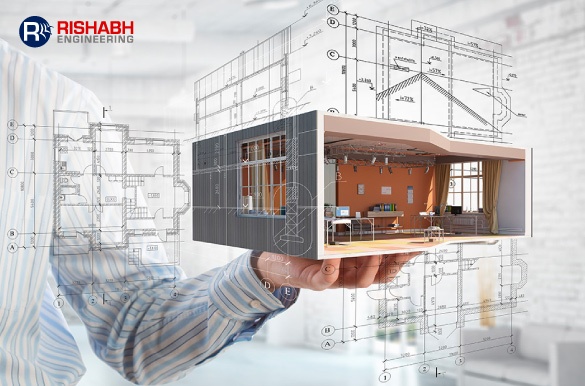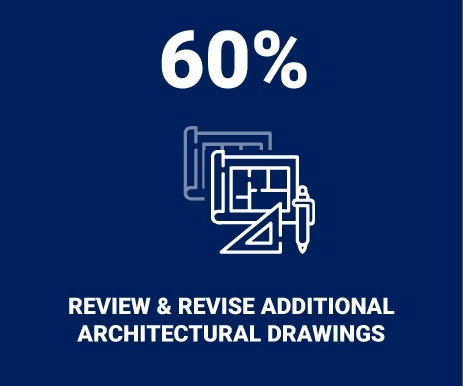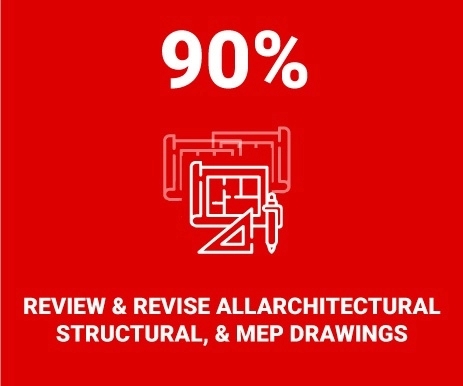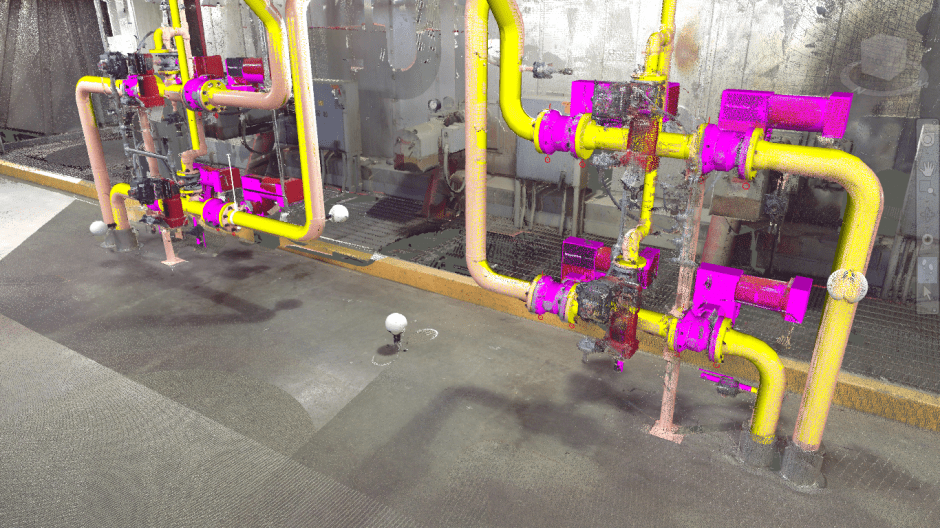
3D Model Review Checklist In Process Industries
3D models have revolutionized how process industries plan, construct, and maintain their facilities, from designing complex industrial plants to visualizing intricate equipment layouts. Therefore, in today’s dynamic process industries, 3D modeling technology helps achieve the right precision & efficiency. However, with the growing complexity of projects & the involvement of multiple stakeholders, ensuring accurate and effective 3D model reviews has become essential.
This blog will present a comprehensive overview about 3D model reviews across process industries. It is aimed at helping you understand what the considerations for each review stages, along with key checkpoints, review checklist and review participants. And most importantly, how it helps organizations to enhance their overall productivity, minimize errors, and deliver projects successfully within budget & schedule constraints.

What is a 3D Model Review?
A 3D model review involves evaluating and analyzing a digital representation to verify its accuracy, quality, and compliance with defined specifications. The graphical data, being an integral part of an engineering database, supports the design process with specialized 3D CAD modeling services. Through this review, feedback is gathered to identify errors, refine details, and enhance the model before finalization—ensuring optimal performance and alignment with project objectives.
Pre-designing Purpose:
A plant is first drafted in a 3D model and pre-designed to fulfill the following purpose:
- To select a preferred and more efficient alternative for the project
- For development and set of project goals
- Develop design criteria according to the requirements
- Looking for some alternative analysis
- To identify potential hazards and risks
- For developing a conceptual plan with cost estimation
- Identify stakeholders and make individuals responsible for some specific work
- To recognize the required regulatory compliance
- For determining NEPA/SEPA guidelines
Advantage:
Utilizing a 3D CAD engineering database offers several benefits, including ensuring document consistency and enhancing coordination among various disciplines. It seamlessly integrates different engineering phases, such as piping, foundations, structures, equipment, electrical, and instrumentation, into a single CAD model, free from clashes or conflicts.
Design Criteria Aspects
The CAD project should be structured in a way that all disciplines meet engineering criteria w.r.t.:
- Safety
- Operability
- Ergonomics
- Constructability
- Accessibility for Maintenance & Fire Fighting (valves location, construction convenience, instrumentation, proper routing of piping, location of firefighting equipment, safe & adequate location for vents & drains & escape routes).
3D Model Review Stages
Listed below are key considerations across 30, 60 & 90 percent design review phases.
30 Percent Model Review

Key Checkpoints:
- Equipment layout and space requirements.
- Major piping and cable routing.
- Initial constructability and operational accessibility.
Should include:
- Location of all mechanical equipment
- Maintenance reserved areas (tube bundle pulling laydown areas, access with cranes, forklift trucks, hydraulic working platforms)
- Critical process lines & major piping routing, including control valves, relief valves & supports
- Major inline instruments
- Main Utility lines
- Equipment Spacing Criteria
- Pipe racks, steel & concrete structures (identifying piping access requirements including stairs, ladders, preliminary gratings & major piping supports
- Battery limit Concept (valving, spade/ spacer)
- Outlining of buildings (control rooms, analyzers, switch rooms)
- Defining main E&I cable routes, UG piping & trenches, roads, paving & curbed areas
Objectives:
- Agreement with the client on equipment & plant layout, finalization of equipment location, dimensions & locations of pipe racks, structures & buildings
- Release of foundation loads
- Release of nozzle orientation information to vendor
- Release of main underground isometrics for fabrication
60 Percent Model Review
Key Checkpoints:
- Clash detection using software like AVEVA E3D, SmartPlant, or Navisworks.
- Structural support placements.
- Equipment and pipe accessibility for operation & maintenance.
- Preliminary safety analysis.
Should include:
- Resolution of 30% model review comments
- > / = 6″ piping details
- Equipment & machinery as per vendor information (including orientation of process, instrument nozzles, platform & ladders)

- Level control instruments & other instrumentation on equipments
- Process & Utility lines (= / > 3″ NPS) including supports, flow measurements & main instrumentation
- Permanent cranes & hoisting beams
- Representation of major platforms for equipment & valve operations
- Electrical & Instrumentation raceway envelopes located on racks & other areas
- Location of pits & trenches
- AG major cable trays
- Remote mounted instruments
- Lighting posts
Objectives:
- Member sizing
- Release of UG Isometrics for IFC
- Release of final nozzle orientation information to vendor
90 Percent Model Review

Key Checkpoints:
- Final clash resolutions.
- Construction sequencing and feasibility.
- Access, egress, and safety checks.
- Consistency with P&IDs (Piping and Instrumentation Diagrams).
Should include:
- Resolution of 60% of model review comments
- 90% of all lines modeled with all supports, inline items, drains, and vents; except minor small bore & utility lines
- Location of Utility stations w/o final routing
- Availability of all minor and major steel & concrete structures
- Junction boxes & UG cable trays
Objectives:
- Release of UG Isometrics for IFC
Basis of review:
- Detailed agenda including schedule, checking features (for equipment, Structural Steel and Civil, Pipe Stress Analysis and Pipe Supports, Safety, Piping) & systems description meant for review should be issued before 90% model review.
- Marked-up latest P&IDs & pre-defined systems as per latest P&IDs. All lines in P&IDs should be allocated in following different categories:
– Marked-up yellow………(detailed review)
– Marked-up green……….(detailed review but spot checks only)
– Marked-up red…………..(no review only minor process/ utility lines)
– Marked-up pink………..(no review lines within vendor supplied package unit)
3D Model Review Checklist
The checklist w.r.t. the following will eventually help to improve quality, identifying & eliminating potential hazardous situations:
- General Safety, Operability & Maintainability
- Fire Prevention & Safety Equipment
- Piping, Valves, Heat Exchangers, Compressors, Pumps, Vessels, Columns
- Relief Systems
- Packages
Marked-up p&ids and agenda for 30/60/90% design reviews must be prepared & submitted by the detail engineering contractor to the client before the 30/60/90% design review
Model Review Participants
According to the 3D model review procedure, the contractor is responsible for informing the client & all relevant disciplines regarding the venue and schedule of model review sessions. The following participants are expected to attend each model review session:
Client Representatives
- Process: Full-time involvement
- Maintenance: Full time
- Construction: Full time
- Operations: Full time
- Project Engineers: Full time
- Other Discipline: Full-time/As per requirement
Contractor Representatives
- Project Manager/ Engineers: Full time
- Model Drafting Team: Full time
- Lead Piping engineer: Full time
- Process engineer: Full-time for process-related clarification
- Mechanical Engineer
- Instrument/Electrical engineer
- Structural Engineer
- Safety engineer: Full time
- HVAC: As per requirement
- Civil Engineer: On call
Responsibilities in Model Review
3D model review should be organized by the contractor. Here’s a list of responsibilities to be carried out for a successful model review meeting.
| Work Activity | Responsibility |
| Review Schedular | Project Manager |
| Document preparation | Project Engineer |
| Review document distribution and agenda sharing | Project manager/Project engineer |
| Venue finalization for model review | Project engineer |
| Tool Review and creation of model file | Design Administrator |
| 3D CAD model – Report status | Lead piping engineers |
| Hold item list reporting | Lead piping engineers |
| Summary & action list preparation | Project engineer |
| Action list report – Review, reconciliation & distribution | Project manager |
| Action list – Follow up & Updation | Project engineer/Lead piping engineer |
| Review model and Status files | Design administrator |
Final Words
It is rare for a design to be finalized in a single iteration, as there are typically review comments and the need to incorporate new updates. To address this, a systematic approach known as the 30-60-90 model review system has been implemented. This process allows for iterative design review and refinement at specific milestones, specifically at 30%, 60%, and 90% completion stages.
System Benefits:
The implemented system provides guidance in several key areas, including:
- Clearly defining the requirements and objectives for each model review milestone
- Establishing specific design requirements for each discipline, such as mechanical, civil, piping, electrical, and instrumentation
- Ensuring that design requirements are updated based on review feedback and guidelines
- Outlining the necessary supporting documents required for model review meetings
- Defining the roles and responsibilities of individuals involved during model review sessions
Seek help with 3D Model Review?
Our experienced team can help you to optimize designs, resolve clashes, and enhance collaboration while ensuring a seamless and successful project.
Frequently Asked Questions
Q: Why are multiple stages (30%, 60%, 90%) used in 3D model reviews?
A: Multiple stages (30%, 60%, 90%) in 3D model reviews are used to ensure progressive and thorough validation of the design as it evolves. Here’s why each stage is important:
- 30% Review: This is the conceptual stage where the general layout, basic design, and overall structure are evaluated. It helps in identifying potential major design issues early on.
- 60% Review: At this stage, more detailed elements such as equipment placement, piping routes, and initial structural components are assessed. It’s a critical checkpoint to address any misalignments or significant design flaws before the design progresses further.
- 90% Review: This is the final review before the design is locked down. The model is almost complete, and this stage focuses on fine-tuning details like tolerances, clearances, and final coordination between disciplines. It ensures that everything is ready for construction or fabrication.
These reviews help identify and mitigate risks at each phase, improving the quality of the design and reducing costly rework during later stages.
Q: What tools or software are commonly used for 3D model reviews?
A: For 3D model reviews, several tools and software are commonly used to streamline the process and enhance collaboration. Some of the most popular ones include:
- Navisworks – Navisworks is widely-used software for project review, clash detection, and 3D visualization. It allows teams to combine multiple 3D models and perform detailed analysis.
- Revit – Used primarily for building design, Revit helps review and analyze 3D models in the AEC (architecture, engineering, and construction) industries.
- AutoCAD – While traditionally 2D, AutoCAD also has robust 3D modeling features and is often used in conjunction with other tools for 3D model reviews.
- Tekla Structures – A powerful tool for structural engineers, Tekla allows for comprehensive 3D modeling, clash detection, and design analysis.
- SolidWorks – A go-to tool for mechanical engineering, SolidWorks enables detailed 3D modeling and product design, making it ideal for reviewing complex models.
These tools help stakeholders ensure that the design meets requirements, identify clashes or errors, and optimize the overall project before construction begins.
Q: What design criteria are assessed during the reviews (e.g., safety, operability, constructability)?
A: During design reviews, several key criteria are assessed to ensure the project meets all required standards and is optimized for safety, efficiency, and feasibility. These include:
- Safety: Ensuring compliance with safety regulations, identifying hazards, and implementing safeguards to prevent accidents.
- Operability: Evaluating the ease of operation, maintenance, and overall functionality of the design in the real-world environment.
- Constructability: Assessing how easily the design can be built within project constraints, considering materials, resources, site conditions, and schedule.
- Regulatory Compliance: Ensuring the design meets local and international codes, standards, and permits.
- Cost Efficiency: Reviewing the design for cost-effectiveness without compromising quality or safety.
- Sustainability: Considering the environmental impact of the design, including energy efficiency and waste reduction.
- Integration: Ensuring seamless integration of various systems (e.g., mechanical, electrical, instrumentation) and interfaces with existing infrastructure.
Q: What are the advantages of conducting structured 3D model reviews?
A: Conducting structured 3D model reviews offers several key advantages:
- Improved Accuracy: Reviews help identify design errors, clashes, or inconsistencies early in the process, reducing costly rework during construction.
- Enhanced Collaboration: Multiple stakeholders, including engineers, designers, and contractors, can participate in real-time collaboration, ensuring that every aspect of the model aligns with project requirements.
- Increased Efficiency: By spotting issues early in the design phase, structured reviews help streamline workflows and prevent delays, ensuring projects stay on track and within budget.
- Better Risk Management: Reviewing 3D models systematically helps in assessing potential risks, ensuring safety compliance and operational integrity.
- Enhanced Communication: Structured reviews ensure clear communication between teams, minimizing misunderstandings and ensuring everyone is on the same page.
- Faster Decision-Making: With all relevant data and stakeholders in one place, decisions can be made quickly, reducing decision bottlenecks and accelerating project timelines.
- Optimized Resource Use: Early detection of design issues can lead to more efficient resource management, reducing waste and improving overall project cost-effectiveness.
Related Blogs
Related Blogs
Plant Reverse Engineering Services
What is Reverse Engineering? An engineering process implemented for enhancing…
Best 3D Plant Design Softwares for Multi-Disciplinary Engineering
In the modern context, the modeling and analysis of new-age…

